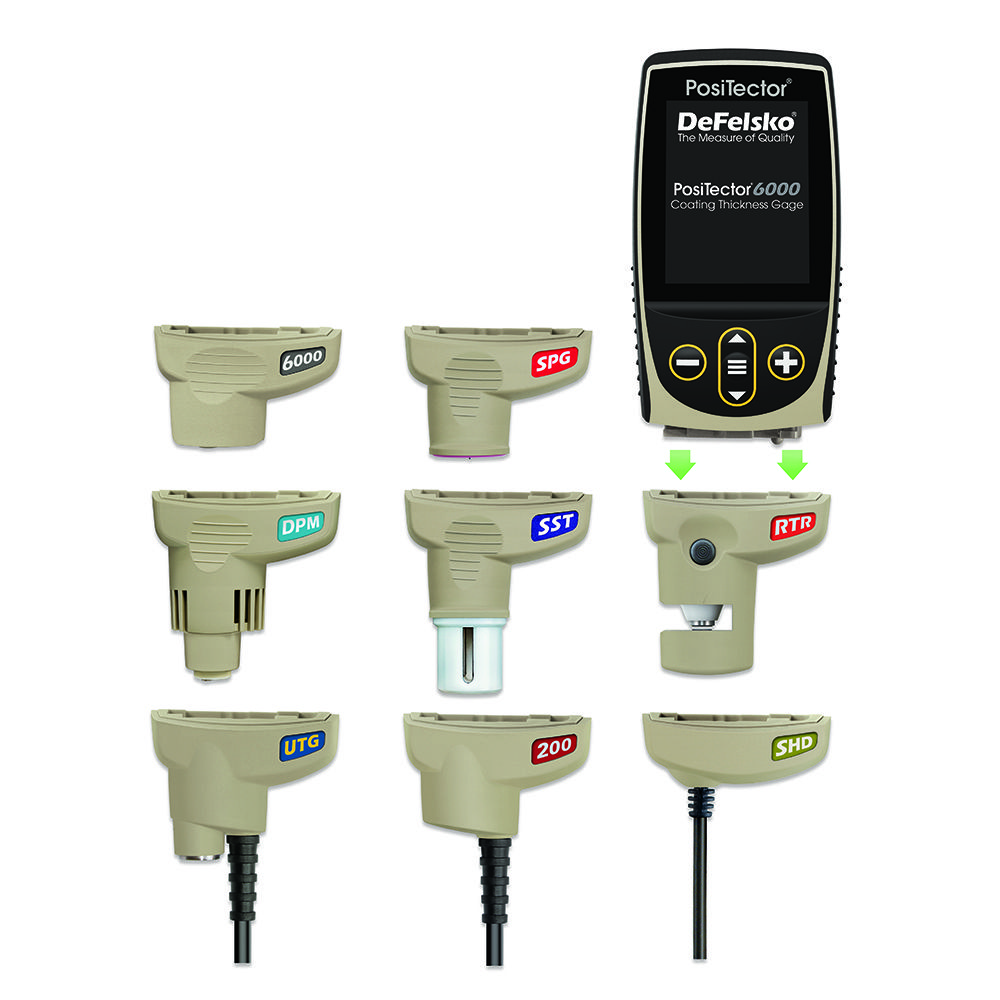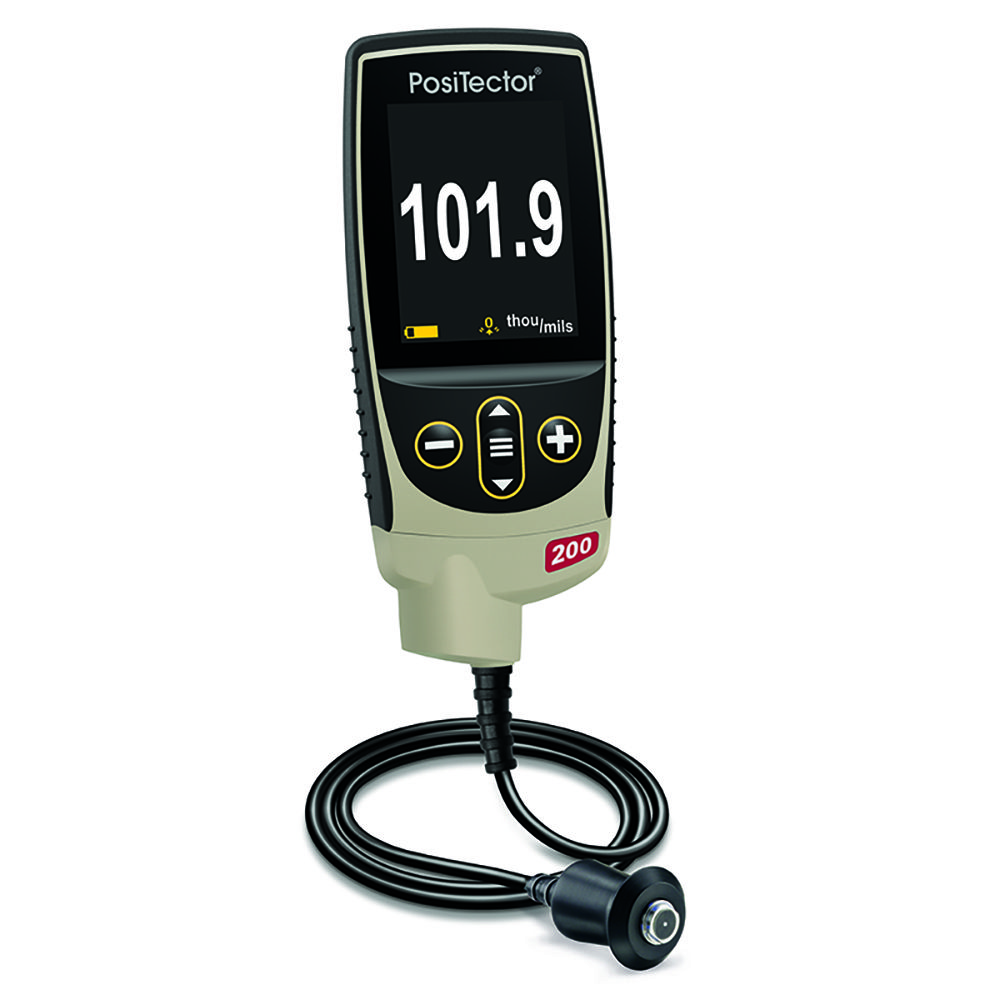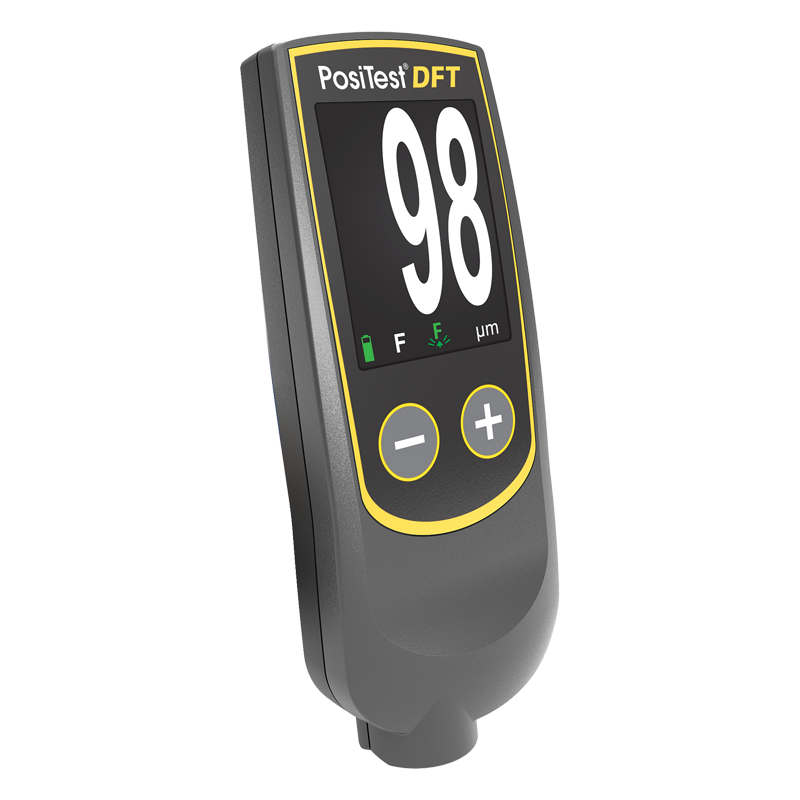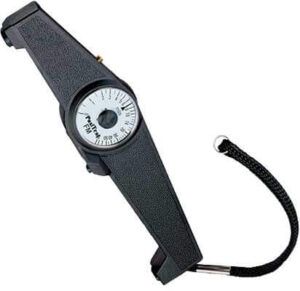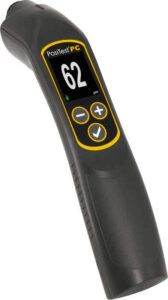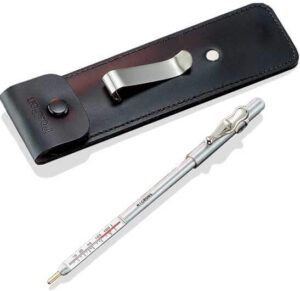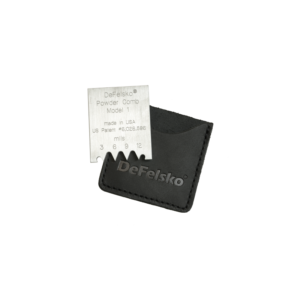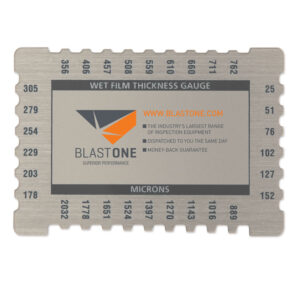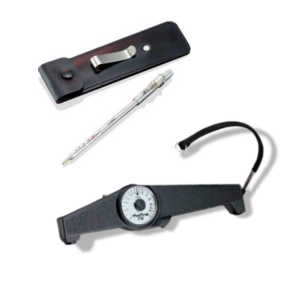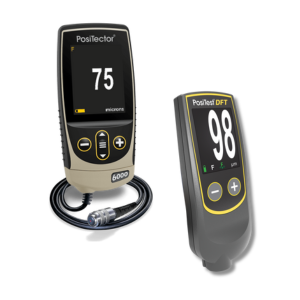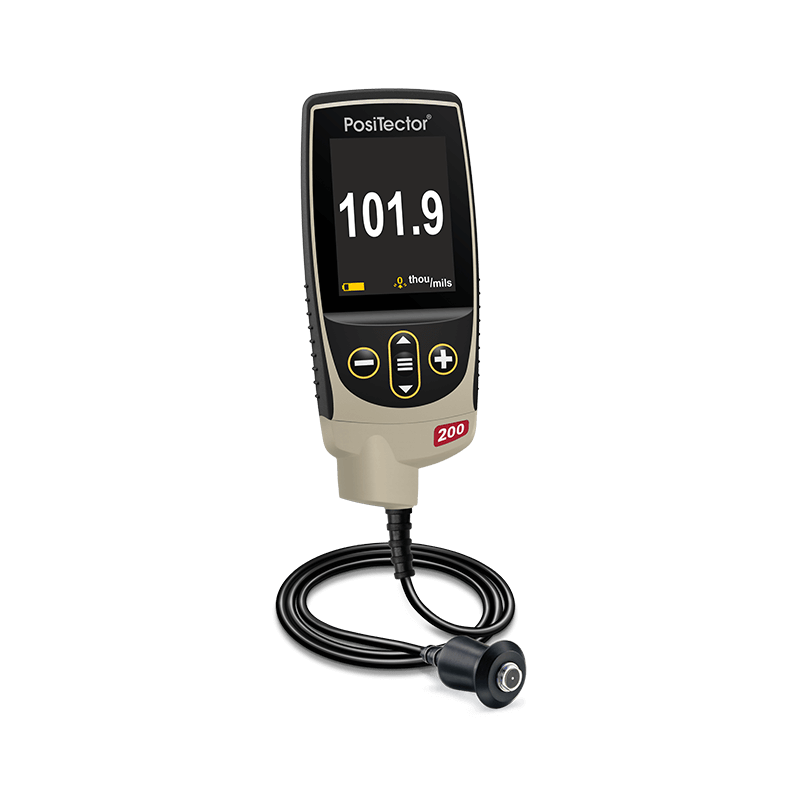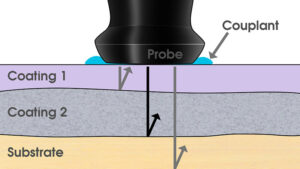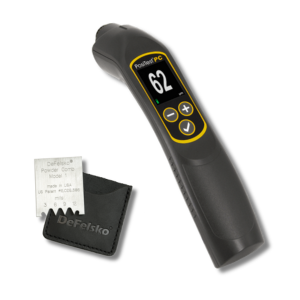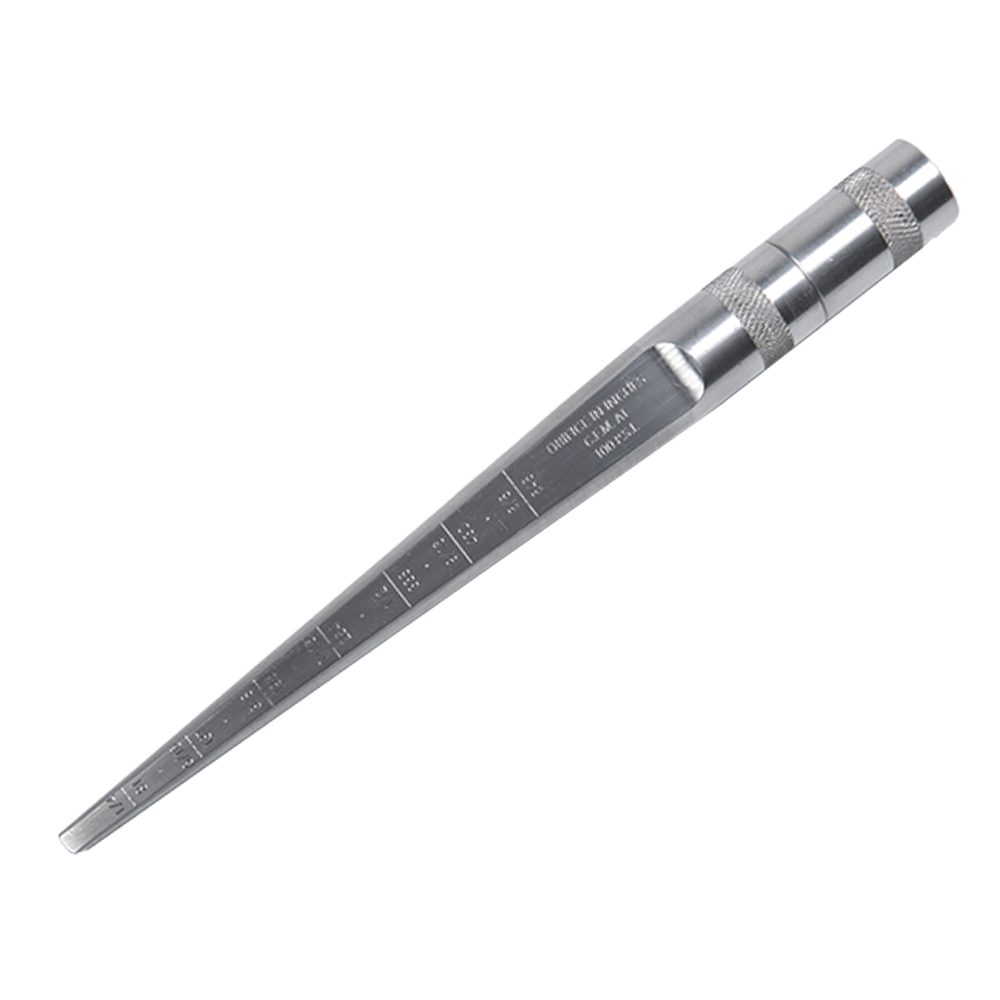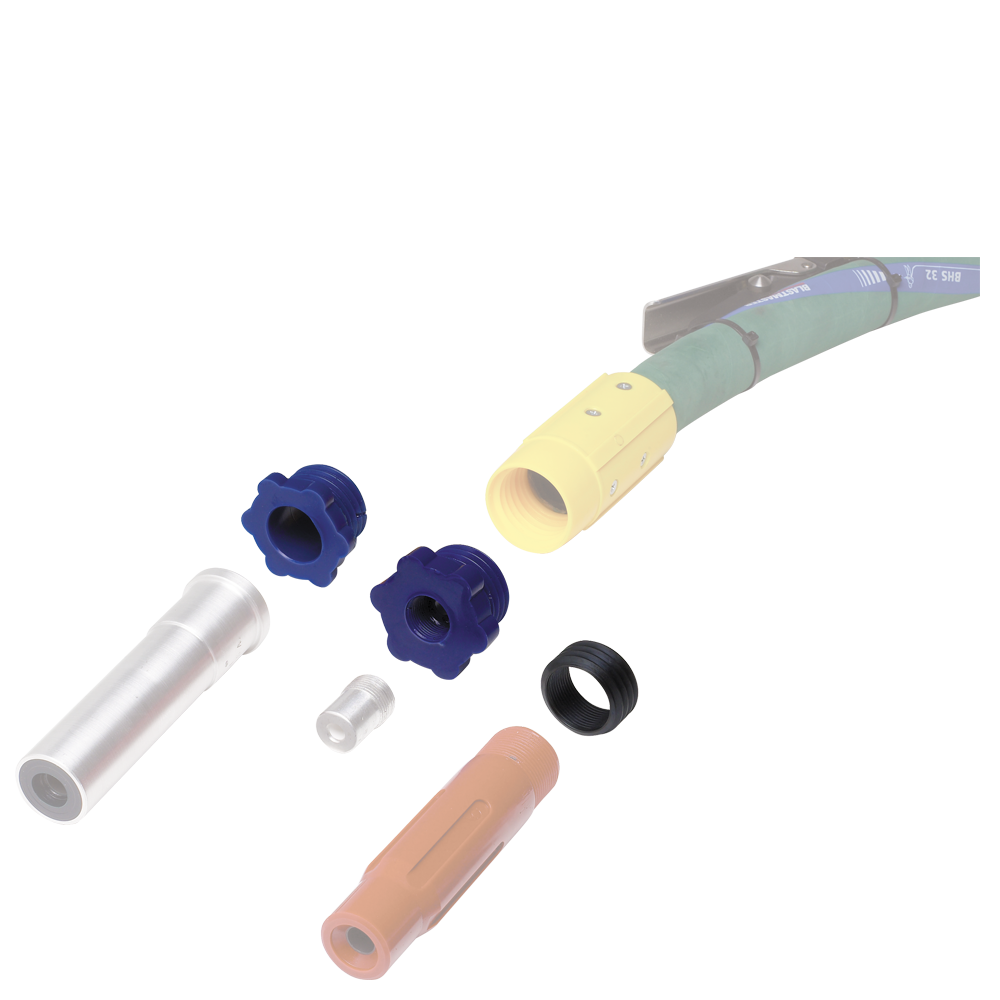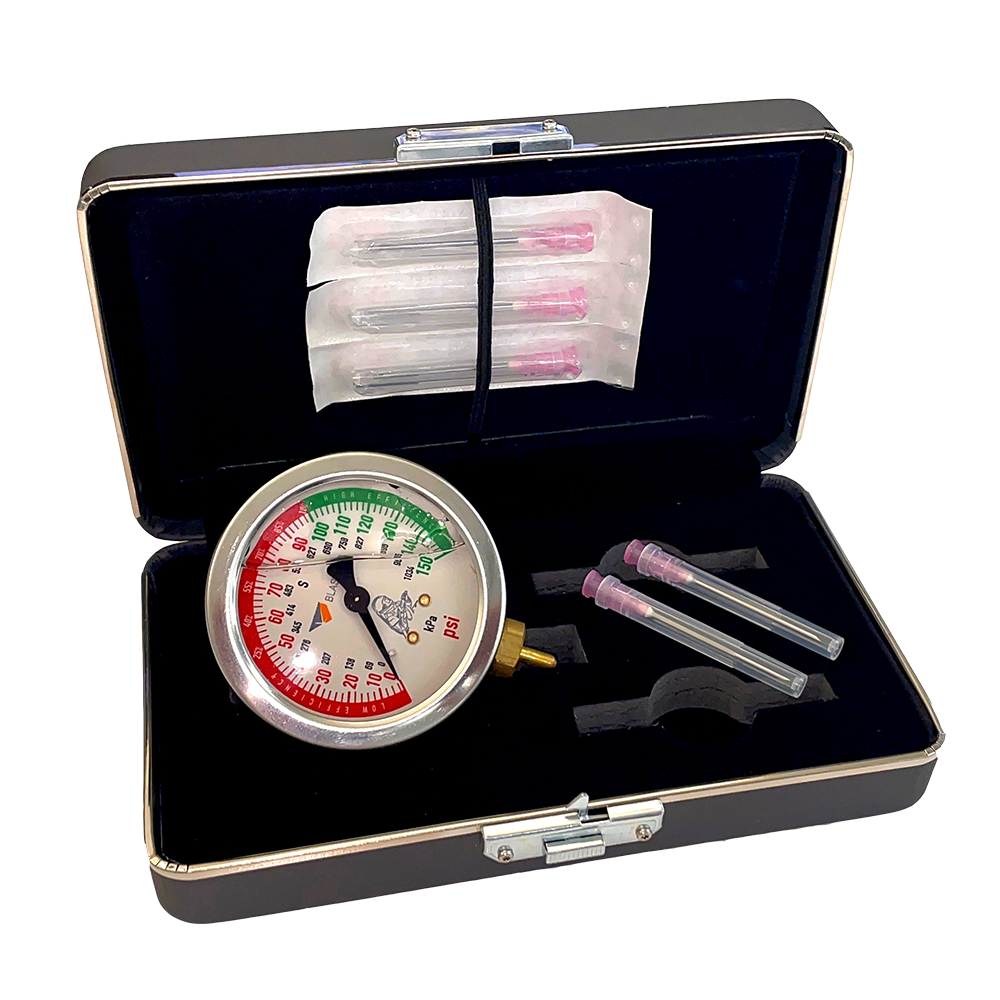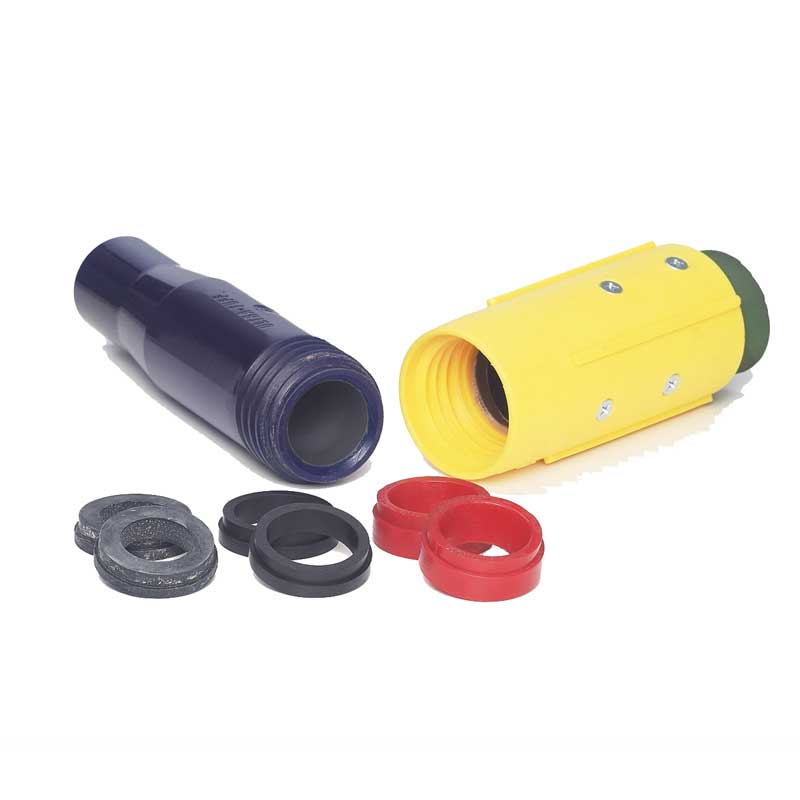A Type 2 electronic coating thickness gage (
PosiTector 6000/
PosiTest DFT) uses electronic circuitry to convert a reference signal into coating thickness. Electronic ferrous paint thickness meters operate on two different magnetic principles. Some use a permanent magnet that when brought near steel, increases the magnetic flux density at the pole face of the magnet. Coating thickness is determined by measuring this change in flux density, which varies inversely to the distance between the magnet and the steel substrate. Hall elements and magnet resistance elements positioned at the pole face are the most common ways this change in magnetic flux density is measured. However, the response of these elements is temperature dependent, so temperature compensation is required.
Other ferrous electronic paint thickness gages operate on the principle of electromagnetic induction. A coil containing a soft iron rod is energized with an AC current thereby producing a changing magnetic field at the probe. As with a permanent magnet, the magnetic flux density within the rod increases when the probe is brought near the steel substrate. This change is detected by a second coil. The output of the second coil is related to the coating thickness. These paint meters also need temperature compensation due to the temperature dependence of the coil parameters.
What are Eddy Current Film Thickness Gages? (Type 2 – Electronic Coating Thickness Gages)
Eddy current techniques are used to nondestructively measure the thickness of nonconductive coatings on nonferrous metal substrates. A coil of fine wire conducting a high-frequency alternating current (above 1 MHz) is used to set up an alternating magnetic field at the surface of the instrument’s probe. When the probe is brought near a conductive surface, the alternating magnetic field will set up eddy currents on the surface. The substrate characteristics and the distance of the probe from the substrate (the thickness) affect the magnitude of the eddy currents. The eddy currents create their own opposing electromagnetic field that can be sensed by the exciting coil or a second, adjacent coil.
 My Account
My Account

